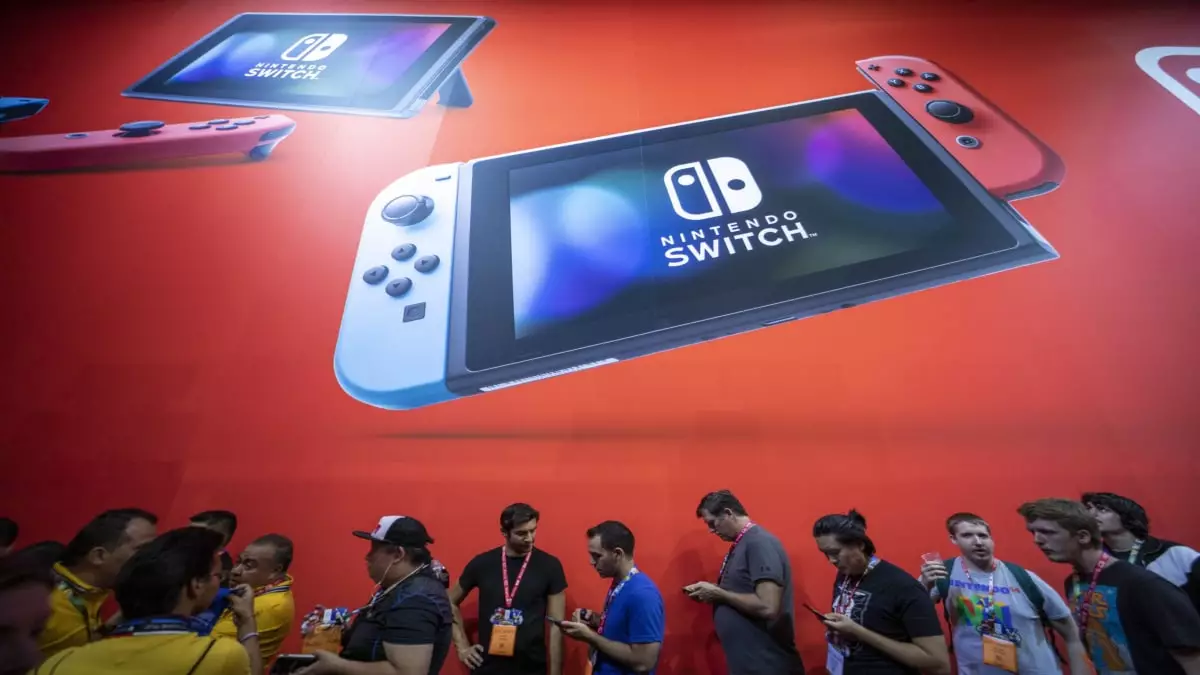Nintendo fans around the world are eagerly anticipating the next chapter in the company’s storied history with the announcement of the successor to the Nintendo Switch. Recent remarks from Nintendo President Shuntaro Furukawa have shed light on this long-awaited device, affirming its backwards compatibility with current Switch software. This move not only confirms that existing Switch users will be able to play their favorite titles on the new console but also signifies Nintendo’s commitment to maintaining relationships with its dedicated fanbase.
The decision to make Nintendo Switch software compatible with its successor is a tactic that speaks to the company’s understanding of consumer expectations. By ensuring that games previously purchased on the current Switch can be played on the upcoming console, Nintendo is minimizing the potential frustration of transitioning to new hardware. In an era where gaming franchises often face backlash for abandoning older titles, this move appears to be a calculated effort to foster loyalty among its users.
Moreover, this backwards compatibility is not simply a convenience; it is an acknowledgment of the evolving landscape of gaming where players invest significant amounts of time and money into their digital libraries. By allowing players to carry over their existing games, Nintendo is creating an ecosystem that encourages continuity, further engaging its audience in their favorite franchises.
In addition to the news on backwards compatibility, Nintendo’s announcement of the availability of Nintendo Switch Online services on the new device marks a critical step forward for console networking. The subscription service, which grants users access to online multiplayer, cloud saves, and a catalog of classic titles, is set to enrich the overall gaming experience on the Switch 2. This strategic integration ensures that current users can migrate seamlessly into the new gaming environment without losing access to services they have become accustomed to.
By highlighting these features early in the announcement, Nintendo is clearly prioritizing user experience and hinting at a streamlined approach to online gaming. In a market saturated with gaming options, having a robust online platform is essential in attracting both new players and seasoned veterans of the gaming world.
As the broader financial results for the company were disclosed, it became apparent that Nintendo is navigating a challenging market landscape. With hardware sales declining significantly, the introduction of a new console comes at a crucial moment. Having sold only 4.72 million units in the last quarter—a staggering 31% drop—Nintendo is poised for a renaissance through this successor console. The forecast adjustment for unit sales reflects a strategic pivot; by focusing on enhancing the user experience and retaining existing customers, the company is laying the groundwork for potential growth.
Furukawa’s emphasis on the long-term relationship with consumers is particularly noteworthy. With over 100 million active users engaging with Nintendo Switch, maintaining affinity is paramount. By reiterating the importance of user account continuity and a rich selection of software, Nintendo is signaling a shift towards a more community-focused approach—one that goes beyond merely selling hardware and software to creating a connected ecosystem that values user engagement.
While Nintendo has not provided specific details regarding the launch date of the Switch 2, the promise of an announcement before the end of the financial year underscores the company’s commitment to transparency and consumer anticipation. As excitement builds, the gaming community is left to speculate not just on the features and technology of the new console, but also on how Nintendo will further innovate in the realm of gaming.
As we await more information from the company, it is clear that Nintendo’s strategy revolves around a deep understanding of its audience and market dynamics. By prioritizing backwards compatibility, maintaining essential online services, and fostering consumer relationships, the company seems ready to position its next hardware triumph amidst challenges, aiming to not only maintain its legacy but to enhance it for future generations of gamers.
As Nintendo steps boldly into this new era, the industry watches intently, hoping for not just a new console, but a renewed promise of joy, connection, and adventure that has defined the company for decades.


Leave a Reply